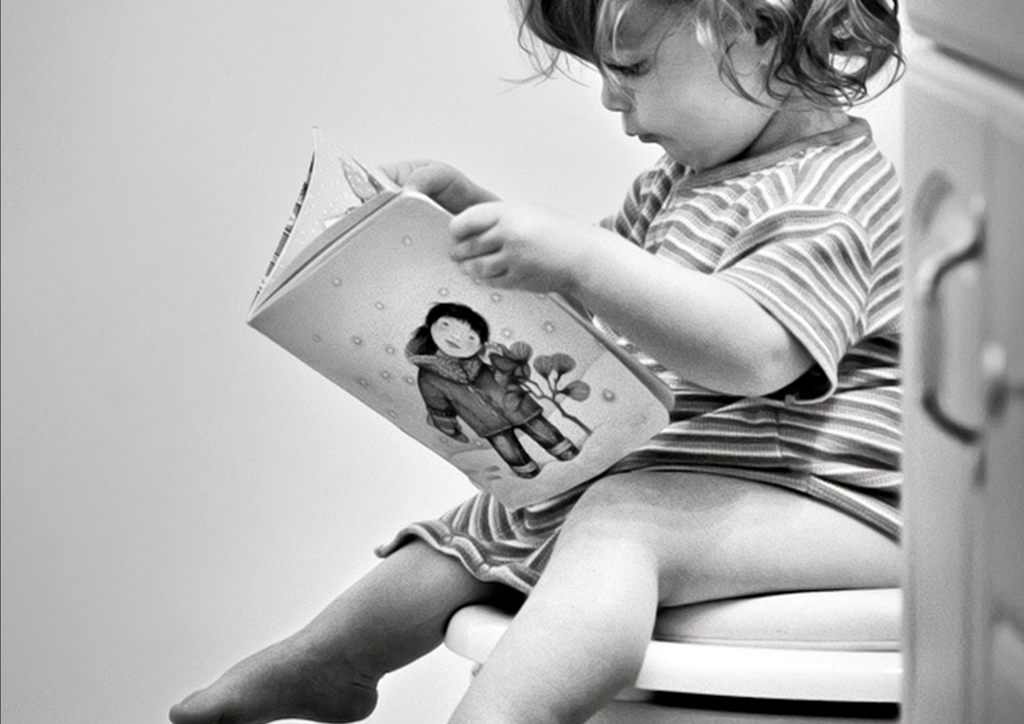Tips on helping with toilet training
Toilet training is a big milestone to accomplish for small children and parents can be just as nervous about tackling it. Children usually toilet train between the ages of two and four years old, however some children can start earlier or later than this. It is important to wait for the child to be ready, as this will ensure a much smoother transition from nappies to the potty or toilet.
Here are some signs that your child may be ready to start toilet training
- they know when they’ve got a wet or dirty nappy
- they get to know when they’re passing urine and may tell you they’re doing it
- the gap between wetting is at least an hour (if it’s less, potty training may fail, and at the very least will be extremely hard work for you)
- they show they need to wee by fidgeting or going somewhere quiet or hidden
- they know when they need to wee and may say so in advance
Before beginning toilet training, it is a good idea to ensure there are no great disruptions or changes to your child’s or your family’s routine. This can make toilet training stressful for the child, which in turn will put them off the idea.
Here are some great ways to support toilet training once the child is ready to begin potty training.
Location
Children will familiarise particular routines with their location, so it is important for them to begin linking the bathroom with having a wee or poo. In the weeks running up to toilet training it is a good idea to always ensure you are changing the child’s nappy in the bathroom. Once toilet training begins, a potty should always be present in the bathroom. If the bathroom is upstairs, you can keep an extra potty downstairs for emergencies.
Practise
It is a good idea to let children practise using the potty or toilet prior to taking away the nappy full time. Each time you change their nappy you can encourage them to sit on the potty or toilet allowing them to familiarise themselves with it and associate it with going for a wee or poo.
Good Hygiene
It is important to encourage good hygiene with young children who are toilet training. Hand washing and wiping themselves correctly should be part of the toilet training process. Ensure the child has access to clean water, soap and tissues when using the toilet.
Praise
Praise is the best way to encourage the child to use the toilet or potty. It can be quite tricky to get the balance right between giving praise and making a big deal out of it. Too much emphasis can make some children shy and not want a great deal of attention.
Clothing
Difficult to unfasten clothing may hinder a child who is toilet training. In the first few months a child is learning to understand and control their bladder, meaning they usually notify you of needing to go to the toilet at the very last minute. Put them in clothes that are easy to change, avoiding tights and clothes with zips or lots of buttons.
Waiting time
Children that are new to toilet training may struggle to sit on the toilet or potty for a period of time. Having a book to look at or toys to play with can help your child sit still. Sand timers are also a great way to encourage sitting, although the child should only be encouraged to sit for a couple of minutes at a time otherwise it will no longer be a fun experience but instead seen as a chore.
Accidents
Accidents will happen during toilet training so it is important to keep positive and upbeat about the situation. If a fuss is made over an accident, the child may begin to feel pressured or anxious leading to more accidents. Simply changing the child and encouraging them to try the toilet next time will help support the child to be more successful next time. Avoid putting the child back into nappies in the day as this can cause a great deal of confusion for the child.
Sticker Charts
Sticker charts are a great way to encourage the child to continue using the potty or toilet. It is a good idea to start off with daily charts as this gives an achievable time frame to stay dry. As the child progresses, daily charts can become weekly. For children that are finding it difficult, daily incentives can be a great way to spur them on; however if this becomes too regular you may find the child will depend on these so it is best to only use in difficult phases.
Boys
Boys will tend to learn to use the potty or toilet sitting down at first, with some then switching to standing to wee. It is important that you encourage boys to sit on the toilet every day to poo. Once they have started weeing standing up it’s easy to forget about pooing, and this could lead to constipation.
Work together
It is important to ensure all adults involved with the child including parents, grandparents and nursery staff are following the same toilet training plan. This will ensure the child understands what is happening and won’t be confused.
It is important to remember that every child is different and will develop at their own pace. Some children with long-term illnesses or disabilities find it more difficult to learn to use a potty or toilet. This can be challenging but it’s important not to avoid potty training for too long.
Have a parents’ guide on potty training with a disabled child (PDF, 762kb). Visit the Contact a Family website for further support and ways of getting in touch with other parents with a disabled child.

